上一篇百度登录加密协议分析(上)主要讲解了codestring,gid,token,rsakey等参数的产生。好了,废话不多说,咱们进入今天的主题,咱们接着上一篇的内容往下讲解,最后还剩三个字段 callback,password,ppui_logintime。(我的新书《Python爬虫开发与项目实战》出版了,大家可以看一下样章)

第三部分:
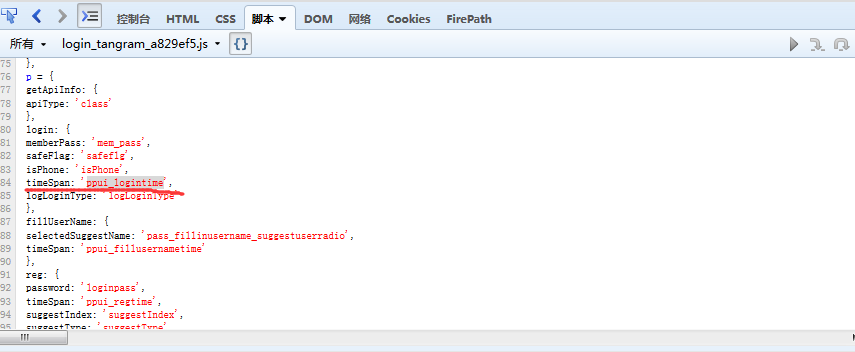

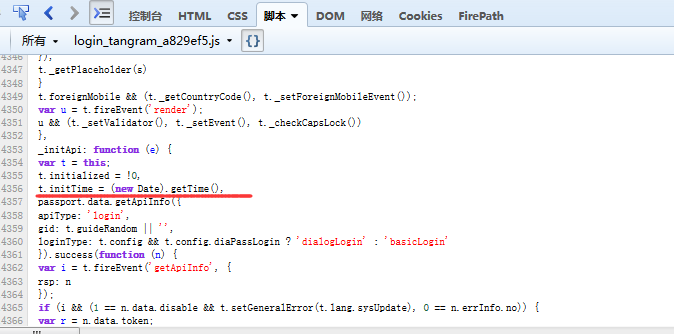
_eventHandler: function() { var e, t = { focus: function(t) { var n = e.fireEvent('fieldFocus', { ele: this }); n && (this.addClass(e.constant.FOCUS_CLASS), this.removeClass(e.constant.ERROR_CLASS), baidu(e.getElement(t + 'Label')).addClass(e.constant.LABEL_FOCUS_CLASS)) }, blur: function(t) { var n = e.fireEvent('fieldBlur', { ele: this }); n && (this.removeClass(e.constant.FOCUS_CLASS), baidu(e.getElement(t + 'Label')).removeClass(e.constant.LABEL_FOCUS_CLASS)) }, mouseover: function() { var t = e.fireEvent('fieldMouseover', { ele: this }); t && this.addClass(e.constant.HOVER_CLASS) }, mouseout: function() { var t = e.fireEvent('fieldMouseout', { ele: this }); t && this.removeClass(e.constant.HOVER_CLASS) }, keyup: function() { e.fireEvent('fieldKeyup', { ele: this }) } }, n = { focus: { userName: function() { e.config.loginMerge && e.getElement('loginMerge') && (e.getElement('loginMerge').value = 'true', e.getElement('isPhone').value = '') }, password: function() { e._getRSA(function(t) { e.RSA = t.RSA, e.rsakey = t.rsakey }) }, verifyCode: function() {} }, blur: { userName: function() {}, password: function(t) { var n = this.get(0).value; n.length && e.validate(t) }, verifyCode: function(t) { var n = this.get(0).value; n.length && e.validate(t) } }, change: { userName: function() { var t = this.get(0).value; e._loginCheck(t) }, verifyCode: function() {} }, click: { verifyCodeChange: function(t, n) { e.getElement('verifyCode').value = '', e._doFocus('verifyCode'), e.getVerifyCode(), n.preventDefault() } }, keyup: { verifyCode: function() { var t = e.getElement('verifyCode'), n = baidu(t); t.value && 4 == t.value.length ? e._asyncValidate.checkVerifycode.call(e, { error: function(t) { n.addClass(e.constant.ERROR_CLASS), e.setGeneralError(t.msg) }, success: function() { n.removeClass(e.constant.ERROR_CLASS), e.clearGeneralError() } }) : e.$hide('verifyCodeSuccess') } }, submit: function(t) { e.submit(), t.preventDefault() } }; return { entrance: function(i) { e = this; var r = (baidu(i.target), i.target.name); if (!r && i.target.id) { var o = i.target.id.match(/d+__(.*)$/); o && (r = o[1]) } r && (t.hasOwnProperty(i.type) && t[i.type].apply(baidu(i.target), [ r, i ]), n.hasOwnProperty(i.type) && ('function' == typeof n[i.type] && n[i.type].apply(baidu(i.target), [ i ]), n[i.type].hasOwnProperty(r) && n[i.type][r].apply(baidu(i.target), [ r, i ])), e.initialized || 'focus' != i.type || e._initApi()) } } }(),
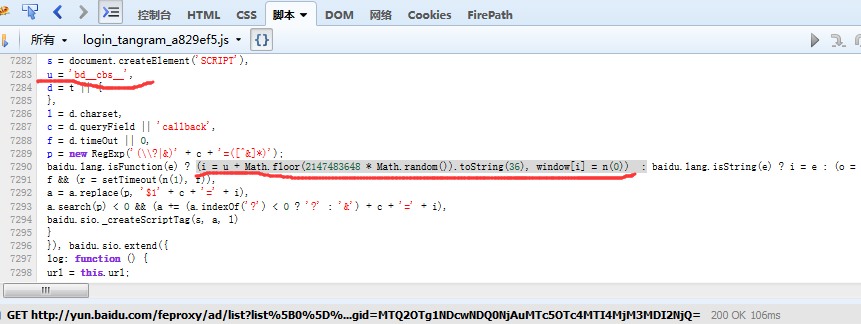
callback ='bd__cbs__'+Math.floor(2147483648 *Math.random()).toString(36)
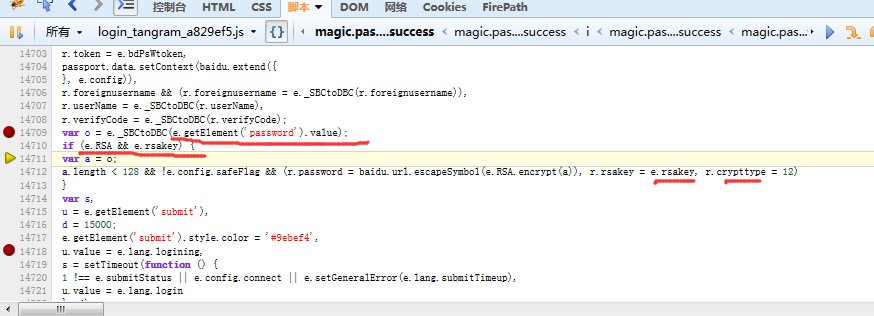
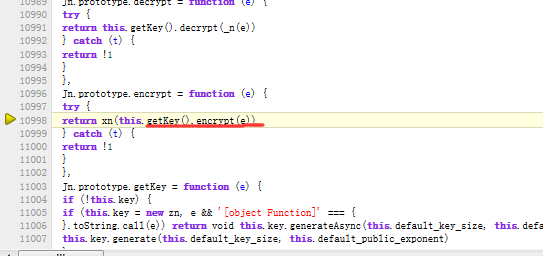
采用的是RSA加密方式: from Crypto.PublicKey import RSA from Crypto.Cipher import PKCS1_v1_5 password = 'xxxxxxxx' with open('pub.pem') as f: pubkey = f.read() rsakey = RSA.importKey(pubkey) cipher = PKCS1_v1_5.new(rsakey) cipher_text = base64.b64encode(cipher.encrypt(password)) print cipher_text
3.5 由于之前安装了pyv8,所以不把gid,callback等js函数翻译成python了,翻译过来也很简单,如果你电脑上没装pyv8,就试着翻译一下。
function callback(){ return 'bd__cbs__'+Math.floor(2147483648 * Math.random()).toString(36) } function gid(){ return 'xxxxxxx-xxxx-4xxx-yxxx-xxxxxxxxxxxx'.replace(/[xy]/g, function (e) { var t = 16 * Math.random() | 0, n = 'x' == e ? t : 3 & t | 8; return n.toString(16) }).toUpperCase() }
3.6 似乎还有验证码没说,其实就是两个链接,一个是获取验证码的链接,一个是检测验证码是否正确的链接。验证码获取很简单,这里就不详细说了。下面我会把整个登录的源代码,贴在下面有兴趣的,可以去玩一下。
总结:
下面我用python模拟了一下登录,使用了requests和pyv8(其实想偷懒),代码如下:
#coding:utf-8 import base64 import json import re from Crypto.Cipher import PKCS1_v1_5 from Crypto.PublicKey import RSA import PyV8 from urllib import quote import requests import time if __name__=='__main__': s = requests.Session() s.get('http://yun.baidu.com') js=''' function callback(){ return 'bd__cbs__'+Math.floor(2147483648 * Math.random()).toString(36) } function gid(){ return 'xxxxxxx-xxxx-4xxx-yxxx-xxxxxxxxxxxx'.replace(/[xy]/g, function (e) { var t = 16 * Math.random() | 0, n = 'x' == e ? t : 3 & t | 8; return n.toString(16) }).toUpperCase() } ''' ctxt = PyV8.JSContext() ctxt.enter() ctxt.eval(js) ###########获取gid#############################3 gid = ctxt.locals.gid() ###########获取callback#############################3 callback1 = ctxt.locals.callback() ###########获取token#############################3 tokenUrl="https://passport.baidu.com/v2/api/?getapi&tpl=netdisk&subpro=netdisk_web&apiver=v3" "&tt=%d&class=login&gid=%s&logintype=basicLogin&callback=%s"%(time.time()*1000,gid,callback1) token_response = s.get(tokenUrl) pattern = re.compile(r'"token"s*:s*"(w+)"') match = pattern.search(token_response.text) if match: token = match.group(1) else: raise Exception ###########获取callback#############################3 callback2 = ctxt.locals.callback() ###########获取rsakey和pubkey#############################3 rsaUrl = "https://passport.baidu.com/v2/getpublickey?token=%s&" "tpl=netdisk&subpro=netdisk_web&apiver=v3&tt=%d&gid=%s&callback=%s"%(token,time.time()*1000,gid,callback2) rsaResponse = s.get(rsaUrl) pattern = re.compile(""key"s*:s*'(w+)'") match = pattern.search(rsaResponse.text) if match: key = match.group(1) print key else: raise Exception pattern = re.compile(""pubkey":'(.+?)'") match = pattern.search(rsaResponse.text) if match: pubkey = match.group(1) print pubkey else: raise Exception ################加密password########################3 password = 'xxxxxxx'#填上自己的密码 pubkey = pubkey.replace('\n',' ').replace('\','') rsakey = RSA.importKey(pubkey) cipher = PKCS1_v1_5.new(rsakey) password = base64.b64encode(cipher.encrypt(password)) print password ###########获取callback#############################3 callback3 = ctxt.locals.callback() data={ 'apiver':'v3', 'charset':'utf-8', 'countrycode':'', 'crypttype':12, 'detect':1, 'foreignusername':'', 'idc':'', 'isPhone':'', 'logLoginType':'pc_loginBasic', 'loginmerge':True, 'logintype':'basicLogin', 'mem_pass':'on', 'quick_user':0, 'safeflg':0, 'staticpage':'http://yun.baidu.com/res/static/thirdparty/pass_v3_jump.html', 'subpro':'netdisk_web', 'tpl':'netdisk', 'u':'http://yun.baidu.com/', 'username':'xxxxxxxxx',#填上自己的用户名 'callback':'parent.'+callback3, 'gid':gid,'ppui_logintime':71755, 'rsakey':key, 'token':token, 'password':password, 'tt':'%d'%(time.time()*1000), } ###########第一次post#############################3 post1_response = s.post('https://passport.baidu.com/v2/api/?login',data=data) pattern = re.compile("codeString=(w+)&") match = pattern.search(post1_response.text) if match: ###########获取codeString#############################3 codeString = match.group(1) print codeString else: raise Exception data['codestring']= codeString #############获取验证码################################### verifyFail = True while verifyFail: genimage_param = '' if len(genimage_param)==0: genimage_param = codeString verifycodeUrl="https://passport.baidu.com/cgi-bin/genimage?%s"%genimage_param verifycode = s.get(verifycodeUrl) #############下载验证码################################### with open('verifycode.png','wb') as codeWriter: codeWriter.write(verifycode.content) codeWriter.close() #############输入验证码################################### verifycode = raw_input("Enter your input verifycode: "); callback4 = ctxt.locals.callback() #############检验验证码################################### checkVerifycodeUrl='https://passport.baidu.com/v2/?' 'checkvcode&token=%s' '&tpl=netdisk&subpro=netdisk_web&apiver=v3&tt=%d' '&verifycode=%s&codestring=%s' '&callback=%s'%(token,time.time()*1000,quote(verifycode),codeString,callback4) print checkVerifycodeUrl state = s.get(checkVerifycodeUrl) print state.text if state.text.find(u'验证码错误')!=-1: print '验证码输入错误...已经自动更换...' callback5 = ctxt.locals.callback() changeVerifyCodeUrl = "https://passport.baidu.com/v2/?reggetcodestr" "&token=%s" "&tpl=netdisk&subpro=netdisk_web&apiver=v3" "&tt=%d&fr=login&" "vcodetype=de94eTRcVz1GvhJFsiK5G+ni2k2Z78PYRxUaRJLEmxdJO5ftPhviQ3/JiT9vezbFtwCyqdkNWSP29oeOvYE0SYPocOGL+iTafSv8pw" "&callback=%s"%(token,time.time()*1000,callback5) print changeVerifyCodeUrl verifyString = s.get(changeVerifyCodeUrl) pattern = re.compile('"verifyStr"s*:s*"(w+)"') match = pattern.search(verifyString.text) if match: ###########获取verifyString#############################3 verifyString = match.group(1) genimage_param = verifyString print verifyString else: verifyFail = False raise Exception else: verifyFail = False data['verifycode']= verifycode ###########第二次post#############################3 data['ppui_logintime']=81755
####################################################
# 特地说明,大家会发现第二次的post出去的密码是改变的,为什么我这里没有变化呢?
#是因为RSA加密,加密密钥和密码原文即使不变,每次加密后的密码都是改变的,RSA有随机因子的关系
#所以我这里不需要在对密码原文进行第二次加密了,直接使用上次加密后的密码即可,是没有问题的。
# ###################################################################################
post2_response = s.post('https://passport.baidu.com/v2/api/?login',data=data) if post2_response.text.find('err_no=0')!=-1: print '登录成功' else: print '登录失败'
我把整个代码上传到git上了:https://github.com/qiyeboy/baidulogin.git,大家可以star和fork。
今天的分享就到这里,如果大家觉得还可以呀,记得推荐呦。
欢迎大家支持我公众号:

本文章属于原创作品,欢迎大家转载分享,禁止修改文章的内容。尊重原创,转载请注明来自:七夜的故事 http://www.cnblogs.com/qiyeboy/